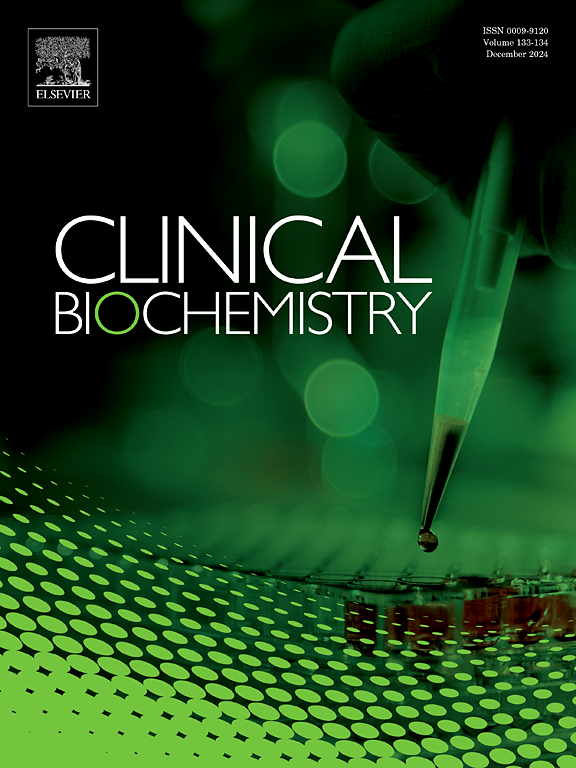Implementing minimal request intervals for laboratory tests: a utilization management study across eight hospitals in South Iran
IF 2.1
3区 医学
Q2 MEDICAL LABORATORY TECHNOLOGY
引用次数: 0
Abstract
Introduction
Effective utilization management in medical laboratories is a challenge. To address this, strategies such as clinical guidelines, minimum requesting intervals (MRIs), and test request limits integrated into hospital information system (HIS) have been proposed.
Materials and methods
A guideline was developed to establish MRIs for 15 high-demand laboratory tests in collaboration with an expert panel. It was implemented across eight public hospitals, affiliated with Shiraz University of Medical Sciences, Shiraz, southern Iran. Following institutional approval, the HIS was programmed to notify healthcare providers of deviations from guideline. Several metrics, including requested test counts, hospitalized patient counts, and total hospitalization days, were extracted from the HIS for one year pre- and post-intervention. Then, rates of change in test utilization and associated financial savings were calculated.
Results
A total of 414,475 unnecessary tests were averted during the first post-intervention year. In addition, a 12.26% decrease was observed in the test-to-hospitalization-day ratio. The highest decreases obtained for serum calcium (25.87%), serum albumin (22.17%), and alanine aminotransferase (21.03%) testing.
Conclusion
Implementing MRI guidelines into the HIS to flag deviations is an effective strategy for laboratory utilization management. Its benefits are multi-faceted, including financial savings (decreased patient and insurer costs), clinical advantages (minimizing diagnostic ambiguity and patient mismanagement), and optimized laboratory resource allocation (staff workload, instrument usage, reagent efficiency).
实施实验室检测的最小请求间隔:伊朗南部8家医院的利用管理研究。
医学实验室的有效利用管理是一个挑战。为了解决这个问题,已经提出了诸如临床指南、最小请求间隔(mri)和集成到医院信息系统(HIS)中的测试请求限制等策略。材料和方法:与一个专家小组合作,制定了一项指南,为15项高要求的实验室测试建立核磁共振成像。该项目在伊朗南部设拉子设拉子医学院附属的八家公立医院实施。在机构批准后,编写HIS以通知医疗保健提供者偏离指南的情况。从HIS中提取干预前和干预后一年的几个指标,包括要求的检测计数、住院患者计数和总住院天数。然后,计算测试利用率的变化率和相关的财务节省。结果:干预后第一年共避免了414,475例不必要的检查。此外,检测与住院天数之比下降了12.26%。血清钙(25.87%)、血清白蛋白(22.17%)和丙氨酸转氨酶(21.03%)下降幅度最大。结论:在HIS中实施MRI指南以标记偏差是实验室利用管理的有效策略。它的好处是多方面的,包括节省资金(降低患者和保险公司的成本),临床优势(最大限度地减少诊断歧义和患者管理不善),以及优化实验室资源分配(工作人员工作量,仪器使用,试剂效率)。
本文章由计算机程序翻译,如有差异,请以英文原文为准。
求助全文
约1分钟内获得全文
求助全文
来源期刊

Clinical biochemistry
医学-医学实验技术
CiteScore
5.10
自引率
0.00%
发文量
151
审稿时长
25 days
期刊介绍:
Clinical Biochemistry publishes articles relating to clinical chemistry, molecular biology and genetics, therapeutic drug monitoring and toxicology, laboratory immunology and laboratory medicine in general, with the focus on analytical and clinical investigation of laboratory tests in humans used for diagnosis, prognosis, treatment and therapy, and monitoring of disease.
 求助内容:
求助内容: 应助结果提醒方式:
应助结果提醒方式:


